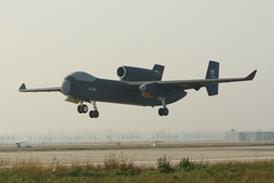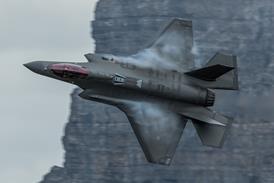Nazario Cauceglia has long had a wish: to look out of his office window next to Venice’s busy airport and see a Sukhoi Superjet in airline service. For eight years, the SuperJet International (SJI) joint venture he heads has been offering the 100-seater in the Western hemisphere – its only success a 30-aircraft deal with Mexico’s Interjet. Now, following a commitment for 15 SSJ100s plus 10 options from Irish airline CityJet, Cauceglia’s dream of seeing the Russian-built regional jet flying revenue passengers in Europe, if not to the city of canals itself, is about to come true.
“I cannot share more, but we are in a good position,” he hinted when he spoke to Flight at SJI’s Venice headquarters on 29 September. “We cannot exclude that in the short term we will see our aircraft flying from Italian or European airports. I feel quite optimistic.” A week later came the revelation that CityJet was in negotiations with SJI, with the order confirmed on 13 October. Cauceglia expressed his delight in a statement that, after years of trying to secure a second airline customer, the Superjet “will operate in the heart of Europe”.
CityJet – which operates from a hub at London City airport – is set to take four aircraft next year and 11 in 2017, replacing Avro RJ85s. The SSJ100 does not yet have certification to operate from the financial-district airport, but SJI says that this will be achieved by the end of 2016, and CityJet plans to launch services from London City the following year. SJI – which as well as having responsibility for sales in Europe, Africa and the Americas, offers training and support for the global customer base – is to provide CityJet with simulator time and maintenance over 12 years.
The breakthrough comes as the Venice business – an Alenia Aermacchi and Sukhoi Civil Aircraft (SCAC) joint venture – aims to simplify its convoluted relationship with the Russian airframer. Until now, SJI and Sukhoi have divided the world into two sales territories, with the Russians controlling the former Soviet Union and Asia. But the demarcation has become fuzzy, and Cauceglia says: “The aim now is to become more integrated”. He adds: “We don’t want to show ourselves as two companies any more. From now on, it should not be important if a deal is signed by SJI or SCAC.”
At the same time, geopolitical and economic forces have increased tensions between the partners. Russia and its industries have been hit by a rouble worth half what it was against the dollar two years ago as a result of falling commodity prices and sanctions prompted by the country’s alleged involvement in Ukraine’s civil conflict. As a result, at Moscow’s MAKS air show in August, Sukhoi unveiled a plan to reduce the cost of producing the Superjet in Komsomolsk-on-Amur by $2.6 million per aircraft by replacing Western suppliers with Russian ones.
It was a controversial proposal, given that much of the Superjet’s appeal – in Russia itself as well as overseas – is based on the involvement in the programme of Western manufacturers such as Snecma, Thales, Parker Aerospace and Honeywell. Cauceglia is unconvinced it will happen. Changing the supply chain would be “nearly impossible”, he says, because of the cost and complexity of recertificating the aircraft with different systems. Also, he adds: “The SuperJet is an international product. I don’t think it’s a problem we will have.”

More than 100 Superjets have been produced since service entry in 2011
Gary Dawson/Rex Shutterstock
Although more than 100 Superjets have been produced and 75 delivered since entry into service in 2011, the programme has struggled. Earlier this year, the Russian government stepped in to pay off around $2 billion in debts owned by SCAC. The PowerJet SaM146-powered SSJ100, which first flew in May 2008, was conceived as a highly symbolic aircraft – the first genuine collaboration between Russian and Western aerospace industries, with a niche appeal based largely on the width of its cabin. It is the only aircraft on the market with five-abreast economy seating.
Despite the financial challenges, Cauceglia maintains the Superjet is in a stronger position than ever. “We are much happier because we have much more good news to share,” he says. “What is especially important is that [the aircraft has] more than 100,000 flight hours and is in service in nine countries, including in severe operating environments, from the cold of Russia to the hot and high climate of Mexico. That is giving us a lot of credit. Let me say that Superjet today is a qualified player in the regional market.”
SJI has made much of its Interjet relationship, regularly showing off an in-service Superjet at air shows. It has delivered 16 aircraft to the Mexican airline and – when we visited Venice – had a further five in various states of completion in its hangar and paintshop. All 30 aircraft will be delivered by the end of next year, which makes the CityJet deal extremely timely. Cauceglia says that Interjet, which also operates Airbus A320s on longer routes, gives “top-priority to cabin comfort” with 32-inch pitch seating, and that passenger feedback has been extremely good.
SJI senior vice president, commercial, Eduardo Munhos de Campos, formerly with Embraer, insists prospects for capturing further customers remain strong. “The aircraft is proven in terms of dispatch reliability, and we are able to deliver a cost per hour that is very competitive – 10-12% lower on a seat basis. We position ourselves in a very niche market, head to head with other 100-seaters, even the new-generation [Embraer E2]. We have several campaigns and we are very optimistic,” he says.
In Europe, Cauceglia says market stagnation is lifting. He believes the Superjet can fill a gap between “low-cost carriers, which dominate, and the big airlines, which are suffering” by offering feeder routes into hubs on routes which do not have the density to make it economical for ‘no-frills’ airlines with narrowbodies. “Of course, as these routes become more successful, the low-cost carriers come in,” he says. “But we see a big prospect in regions like northern Italy and southern Europe, where we can offer a lower seat and trip cost on both point-to-point and feeder routes.”
Elsewhere, SJI continues to target Latin America, where the market – as with Interjet’s business model – is almost entirely point-to-point. Africa is also very much on the radar. “We have many contacts going on; it is 20% of our business plan,” says Cauceglia. Scope clauses mean that the US market remains restricted to SJI and its competitors, although Cauceglia remains hopeful they will soon be lifted. And with Interjet’s services into the country, “people are beginning to see [the aircraft]. They are very curious. It is a good way to promote it,” he says.
Another even more niche opening could be in corporate aviation. In September, business-aviation services provider Comlux took delivery of the first Sukhoi Business Jet at its US facility in Indianapolis. The aircraft – one of two destined for the Swiss company, and which will be operated by Comlux’s charter arm in Kazakhstan – was ordered from SCAC, although SJI has been involved in providing maintenance and other support. Cauceglia believes the Superjet can have further success in this segment. “We are convinced this is a great platform for a business jet,” he says.
A bigger, perhaps necessary, opportunity is the development of a stretch version. Cauceglia says “counteracting what the competition is doing for 2019/20” remains shareholder strategy, although a larger variant remains a study for now. De Campos adds: “We see a stretch as very important. As the narrowbody market grows to bigger aircraft, there will be a niche below the low-cost carriers for an aircraft of more than 100 seats. It will add revenue for us to have a family.” But he cautions: “Any new aircraft would have to have commonality and the same level of reliability [as the SSJ100].”
Whether Cauceglia will witness Superjets flying passengers from his office window any time soon remains to be seen, but the operating debut in Western Europe of an aircraft that CityJet executive chairman Pat Byrne describes as game-changing will mark a milestone for SCAC and its Italian partner as they continue trying to establish the aircraft as a serious global player. SCAC president Ilya Tarasenko summed it up the significance when the CityJet deal was announced: “When the SSJ100 will start flying in the European sky…it is surely stepping into maturity.”
Source: Flight International























